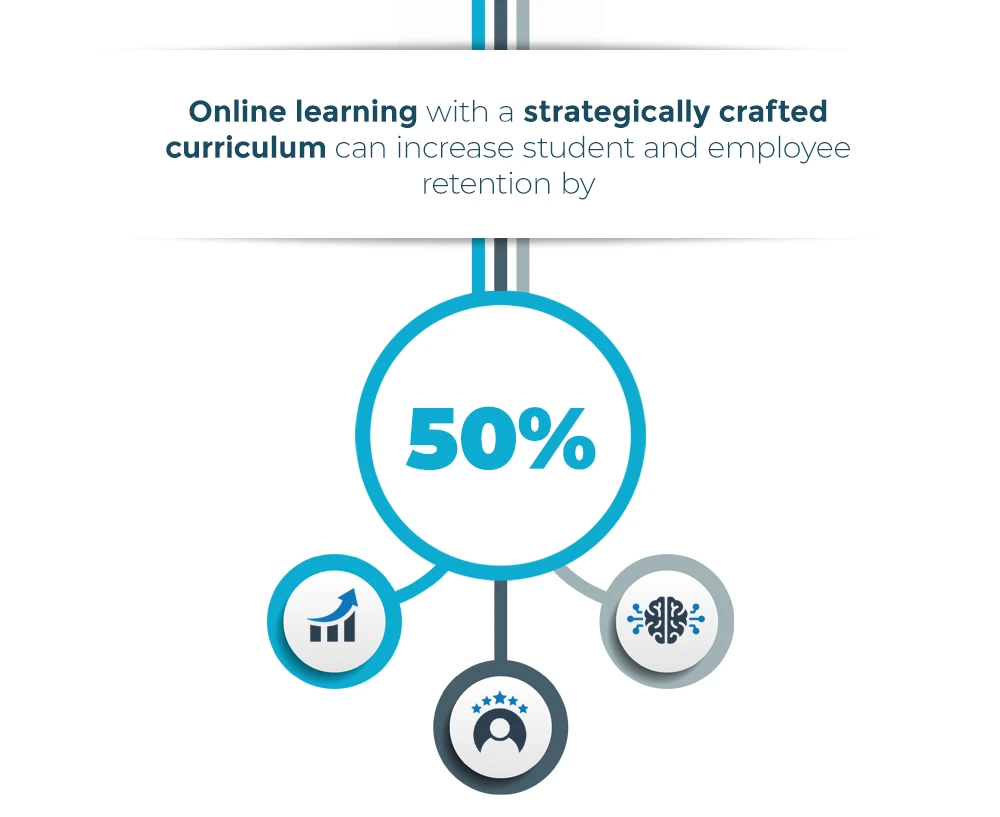Curriculum Development
When it comes to creating an effective and engaging online curriculum in today’s technological age, one must take a systematic approach to it that combines educational theory and practical application. The days of doing rote memorization skills are over. While this rote memorization still does have its place, especially when it comes to basic math facts, in other areas, a deeper approach is necessary. For the learner to truly understand certain concepts, we must, as curriculum developers, take an approach and account for how our society has changed.
We live in a society now filled with TikTok’s, YouTube Shorts, Facebook Reels, etc… where the viewer only must focus for 3 minutes to gather the information the video is giving. This alone has caused the ability to focus on anything to drastically change. This single societal change has created a situation where curriculum developers must ensure that whatever is put in front of the learner must be highly engaging.

Learning Goals & Objectives
Learning goals and objectives are crucial in education because they provide clarity and direction, guiding both instructors and students. By outlining what students should know, understand, or be able to do, they create focus, help students stay motivated, and give them something concrete to work toward. Goals also allow instructors to design assessments that measure student progress accurately, ensuring evaluations are meaningful and directly relevant. With clear objectives, instructors can select materials and activities that align with the intended outcomes, creating purposeful lessons and enabling them to adapt instruction to meet different learning needs. Altogether, well-defined goals foster effective, measurable, and engaging learning experiences.
- Assessment and Evaluation
- Corporate Training
- Formal Education
- Lifelong Learning
- Professional Development
- Remote Learning
- Skill Development
- Software Simulation
- Supplementary Education


Elements of Curriculum Development

Assessment Methods
In online learning, various assessment methods can help gauge both student progress and engagement. Quizzes and tests are frequently used, with formats like multiple-choice, true/false, and matching questions serving as quick knowledge checks. Low-stakes quizzes serve as self-assessment tools that give both students and instructors insight into areas that may require more focus. Additionally, gamified assessments can add an engaging dimension to online learning. Interactive simulations, commonly used in fields like healthcare, engineering, and business, allow students to apply course concepts within a controlled scenario, while digital badges and leaderboards provide motivation by rewarding effort and progress.
Evaluation and Feedback
Effective evaluation and feedback in an online course involve a combination of timely, personalized, and constructive responses to help students understand their progress and areas for improvement. First, setting clear expectations through detailed rubrics and grading criteria ensures transparency. Automated assessments, like quizzes, can provide immediate feedback, enhancing self-assessment. Personalized feedback on assignments is essential; detailed comments, along with audio or video responses, foster a stronger connection with students. Promoting self-reflection through self-evaluation forms and reflection prompts helps students critically assess their work. Timely feedback, especially on high-impact assignments, is crucial for continuous improvement, and mid-course check-ins provide valuable insights. Finally, recognizing effort and improvement through positive reinforcement builds a supportive learning environment, motivating students to engage and excel throughout the course.


Scope and Sequence
In curriculum design, “scope and sequence” refer to two essential elements: the scope outlines the content, skills, and learning objectives to be taught, ensuring comprehensive coverage of necessary material. The sequence arranges this content in a logical, developmental order, allowing learners to build on prior knowledge and progress in complexity over time. Together, they ensure consistency, coherent lesson planning, and alignment with educational standards (when applicable). Scope covers the breadth and depth of topics, while sequence ensures these are taught in a systematic way.
For example, in mathematics, basic arithmetic may precede algebra and geometry. This structure helps teachers deliver content effectively and supports students in achieving a clear, organized progression in their learning.
Instructional Strategies
Effective online courses utilize diverse instructional strategies to enhance engagement and facilitate learning. Active learning techniques, like quizzes, encourage critical thinking. Dividing content into concise, focused modules with specific learning outcomes aids retention and concentration. The flipped classroom model combines pre-recorded lectures with live sessions for discussion and practical application. Incorporating multimedia—such as videos, animations, and interactive infographics—helps clarify complex ideas, while frequent low-stakes assessments offer immediate feedback, reinforcing students’ understanding. Real-world applications, including scenario-based learning and simulations, provide practical context. Additionally, feedback mechanisms like instant quiz responses enrich the learning experience. Balancing asynchronous materials for flexibility with synchronous sessions for interaction, along with opportunities for reflection, creates a dynamic, inclusive online learning environment.


Instructional Resources
Instructional resources play a crucial role in enhancing online learning by providing structured, engaging, and accessible content for students. They enhance engagement through interactive elements like videos, quizzes, and simulations, making learning more enjoyable and encouraging active participation. Additionally, a variety of instructional materials cater to different learning styles, ensuring that all students can find effective methods for understanding the material. These resources offer clear guidance and expectations, helping students navigate the online environment effectively. With the ability to support self-paced learning, students can revisit materials as needed, which is especially beneficial for complex topics. Accessibility features ensure that digital resources cater to all learners, including those with disabilities. Furthermore, immediate feedback mechanisms help students understand their progress and areas needing improvement in real-time. Ultimately, these resources help build essential technology and digital literacy skills, preparing students for the demands of the modern workplace and creating an effective online learning environment that promotes engagement, understanding, and collaboration.
Two companies in one
Addis Enterprises + Addis Education
Because we are backed up by Lansing’s award winning design firm, Addis Enterprises, we offer a unique advantage to our clients. This means we can blend top-notch design and marketing strategies right into your e-learning projects. Whether it’s creating sleek custom platforms, designing interactive courses, or helping your training reach a wider audience, we bring together the best of both worlds. By combining our expertise, we make sure your learning solutions don’t just look great—they work hard to support your goals and make a real impact.
Testimonials

Our collaborative relationship has been like working with lifelong colleagues who just "get" you and your needs.

